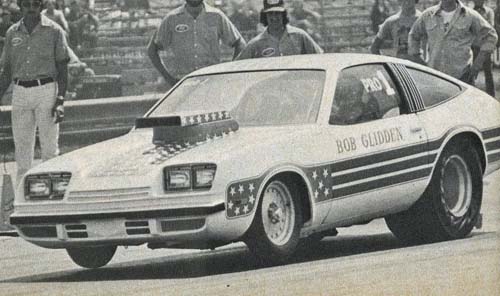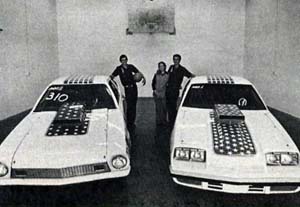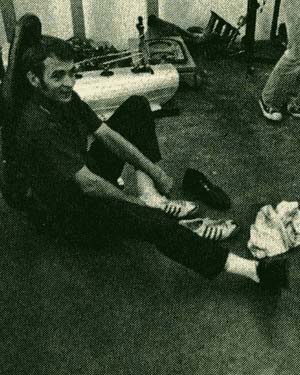GLIDDEN’S FIRST GM EXPERIENCE

 Bob
Glidden was so angry that he could have chewed an engine block in half.
His potent and competitive Ford combination had been hit yet another
time by the pounds-per-cubic inch parity regulators. However, this time
they’d gone too far and Glidden was prepared to point that out. He
would use the next national event, the prestigious 1976 NHRA U.S.
Nationals in Indianapolis as his pulpit to preach a message.
Bob
Glidden was so angry that he could have chewed an engine block in half.
His potent and competitive Ford combination had been hit yet another
time by the pounds-per-cubic inch parity regulators. However, this time
they’d gone too far and Glidden was prepared to point that out. He
would use the next national event, the prestigious 1976 NHRA U.S.
Nationals in Indianapolis as his pulpit to preach a message.
He may bleed GM blood now, but once upon a time it was a foreign experience

 Bob Glidden was so angry that he could have chewed an engine block in half. His potent and competitive Ford combination had been hit yet another time by the pounds-per-cubic inch parity regulators. However, this time they’d gone too far and Glidden was prepared to point that out. He would use the next national event, the prestigious 1976 NHRA U.S. Nationals in Indianapolis as his pulpit to preach a message.
Bob Glidden was so angry that he could have chewed an engine block in half. His potent and competitive Ford combination had been hit yet another time by the pounds-per-cubic inch parity regulators. However, this time they’d gone too far and Glidden was prepared to point that out. He would use the next national event, the prestigious 1976 NHRA U.S. Nationals in Indianapolis as his pulpit to preach a message.
If the NHRA wanted to regulate one of their die-hard Ford runners into a Chevrolet combination, then he’d fulfill their desire.
Glidden had become accustomed to the pencil-whipping over the years, but even this time he’d had enough. He was the clearly defined leader amongst a dwindling Ford contingent.
At Indy, he brought out a Chevrolet Monza; albeit one delivered in a pinch.
I had no involvement with Ford other than I raced one,” Glidden said. “Every other race, they either took weight off of the GMs or put it on me. It got to be such a hassle. I felt like I had to prove a point that I would do something different.”
Glidden purchased the Monza from chassis builder Don Hardy.
“Every other race, they either took weight off of the GMs or put it on me. It got to be such a hassle. I felt like I had to prove a point that I would do something different.”
 “Hardy was building it for someone else and it was almost completed when I came along,” Glidden said. “He didn’t mind at all if I took his place in line.”
“Hardy was building it for someone else and it was almost completed when I came along,” Glidden said. “He didn’t mind at all if I took his place in line.”
Glidden pointed out that he prepared the Monza in a frantic thrash. That included a paint job that was applied overnight. He’d become accustomed to switching cars around that season considering that he’d jumped back and forth from an older model Mustang and Pinto and later a Mustang II.
“They’d hit us for all kinds of weight,” Glidden said. “The one good thing about the Monza is when we came out there; we were almost a half-pound per cubic inch lighter.”
Glidden said there occasions where the Chevrolet cars were 300 pounds lighter during the 1976 season.
Glidden did his own engines – Ford engines. Now he was going to have to find a way to build a General Motors equivalent.
“Obviously I didn’t have a good baseline or I might have done better than I did,” Glidden said.
Glidden paints a picture of failure but in reality, he was still able to coax a 9.00 elapsed time at 148 miles per hour from a 373-inch motor that he’d never run before, much less tested. He was first alternate and the DNQ marked the first of his career.
“I didn’t keep that car long at all,” Glidden said. “In fact I sold it, the next week to John Lingenfelter and he won all kinds of races with it.”
Glidden made it through the season with his Pinto but also made plans for the 1977 season and beyond. He and Hardy began working on the car that would define his career – the 1978 Ford Fairmont.
“Now that car was the opposite of that Monza,” Glidden said. “We were back in our comfort zone and it showed when we won the championship the way we did.”




































